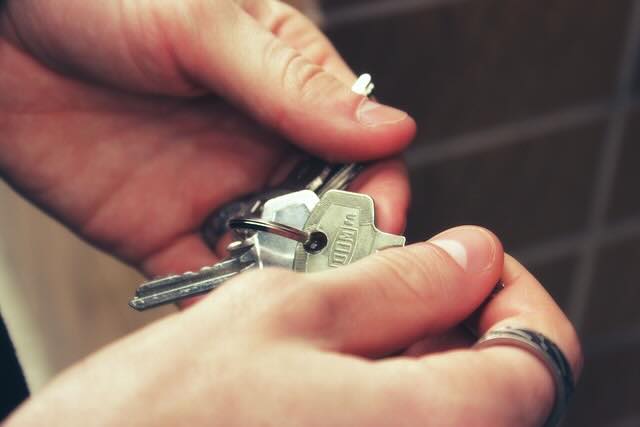Navigating the dynamics of shared living can be both exhilarating and challenging. One of the quirkiest yet surprisingly common scenarios many face is having a roommate constantly moving things around in the house. While this might initially seem like just another eccentric habit, it’s a behavior rooted in a myriad of psychological, emotional, and personal reasons.
This article delves deep into understanding this phenomenon, its implications, and offers insights into establishing a harmonious living environment. Whether you’re the one who loves to rearrange or the one left baffled by the frequent spatial shifts, this comprehensive guide provides a roadmap to coexisting with understanding and empathy.

Table of Contents
Understanding Roommate Behavior
It’s not uncommon to find yourself perplexed or even irritated by your roommate’s penchant for constantly moving things around in the house. This behavior, while seemingly arbitrary, can stem from various underlying reasons, both superficial and profound. To effectively manage and adapt to such scenarios, it’s vital first to understand the mindset behind these actions.
Common reasons for moving things
Every individual has a set of unique habits, quirks, and ways to deal with their surroundings. For some, the act of rearranging and moving items serves as:
- A therapeutic activity: The process can be cathartic, allowing them to channel their energy and refocus.
- A sense of control: In a chaotic world, having control over one’s immediate environment can be reassuring.
- Aesthetics: Some people genuinely enjoy experimenting with different settings to find the most visually pleasing arrangement.
- Functionality: Your roommate might find certain configurations more practical or efficient for daily tasks.
Psychological implications of frequent change
At a deeper level, the constant need to shuffle things around might be indicative of certain psychological nuances:
- Coping with stress: Similar to how some people clean when they’re anxious, moving things might be a way to cope with stress or other intense emotions.
- Fear of stagnation: For some, a static environment might symbolize a lack of growth or progress. By regularly changing their surroundings, they might feel they’re moving forward in life.
- Memory triggers: Specific placements might evoke memories, both good and bad. By changing arrangements, they could be attempting to escape negative reminders or recreate positive ones.
It’s essential to approach such behaviors with empathy and openness. Remember, everyone has their own way of interacting with their environment, and what seems erratic to one might be perfectly logical to another. Understanding is the first step towards cohabiting harmoniously.
Roommate is constantly moving things around in the house
Living with someone often means adjusting to their habits and quirks. One of the more peculiar behaviors you might have observed is your roommate’s constant need to move things around the house. While it can be baffling, understanding the reasons and effects of this behavior can help foster a more harmonious living environment.
Personal experiences and case studies
Over the years, I’ve come across various accounts of people dealing with roommates who have this unique habit. For instance:
- Anna and her restless roommate: Anna shared an apartment with Grace. Every week, Grace would modify the living room layout, citing reasons from better Feng Shui to just needing a change. Anna, initially amused, soon found the unpredictability unsettling. However, upon discussing it, Grace revealed it was her way of dealing with homesickness since she came from a different country. This change reminded her of her family back home, who often redecorated their home during festivals.
- Mike’s tale of the musical chairs: Mike lived with Dan, a freelance musician. Dan’s constant need to move furniture, especially chairs, was linked to his varying requirements for acoustics based on the instrument he was practicing.
Through these anecdotes, it becomes evident that the reasons for such behavior can be as diverse as the individuals themselves.
The impact on cohabiting relationships
Constantly changing living arrangements can have several effects on the dynamics of roommate relationships:
- The element of surprise: Coming home to a different-looking space every other day can be both refreshing and disconcerting. While some might appreciate the novelty, others might find it destabilizing.
- Sense of belonging: If one roommate is making all the decisions about the layout without consulting the other, it might lead to feelings of exclusion or being a guest in one’s own home.
- Practical concerns: Constant movement can lead to wear and tear on furniture and might even result in misplacing or losing items.
- Mental and emotional effects: For some, a stable environment is crucial for mental well-being. Changes, especially when unexpected, can induce stress or anxiety.
Understanding that the act of moving things around the house can have varied implications is crucial. It’s not merely about aesthetics or functionality; it intertwines with deeper emotional and psychological layers. Addressing this behavior requires patience, communication, and sometimes even compromise to ensure both roommates feel comfortable and heard.
How to Approach the Situation
Navigating the waters of shared living can be challenging, especially when faced with habits that disrupt the equilibrium of your living environment. If your roommate is constantly moving things around in the house, it’s essential to approach the situation with sensitivity, understanding, and practicality.
The importance of communication
Open dialogue is the cornerstone of any successful relationship, including that between roommates. Before jumping to conclusions or expressing annoyance:
- Active Listening: Understand where they’re coming from. Ask open-ended questions like, “What makes you want to rearrange the living room so frequently?” This will give them an opportunity to explain their perspective.
- Expressing Your Feelings: Frame your concerns in terms of your feelings to avoid sounding confrontational. For instance, “I feel disoriented when I come home to a changed setup,” rather than “You need to stop moving things.”
- Setting a Safe Space: Choose a conducive environment for this conversation. A casual setting, perhaps over a cup of coffee, can make the discussion more relaxed and productive.
Finding a compromise
Living with a roommate is all about give and take. Once both sides have been heard, finding middle ground can lead to a more harmonious coexistence.
- Establish Zones: Divide the house into areas that can be rearranged and those that stay consistent. For instance, the living room could be a flexible space, while bedrooms remain static.
- Schedule Changes: If your roommate’s need for change is consistent, perhaps set up a monthly or bi-monthly “redecorating day.” This way, both of you can contribute ideas, and the changes won’t be unexpected.
- Seek External Input: Sometimes, a third-party perspective can be beneficial. Consider seeking advice from mutual friends or even professional mediators if the situation escalates.
Creating an Action Plan
Once you’ve reached a consensus, document your decisions. This might seem formal, but having a reference can be useful if issues resurface.
- Joint Decision List: Write down the compromises and decisions you’ve both agreed upon. It can be as simple as a list on the fridge or a shared document.
- Check-ins: Periodically revisit the conversation to ensure both of you are still comfortable with the arrangement. Living situations and personal feelings can evolve, and it’s vital to keep the lines of communication open.
By understanding the underlying reasons, communicating openly, and finding a balanced compromise, you can turn a potentially contentious issue into an opportunity for growth in your roommate relationship. Remember, it’s all about creating a shared space where both of you feel at home.
The Positive Side of Change
While the constant shifting of items and furniture by a roommate can initially seem disruptive, there’s a silver lining to this behavior. Embracing change, even in the form of room rearrangements, can offer a plethora of benefits that might not be immediately apparent. Let’s delve into the brighter aspects of such transformations.
Benefits of a refreshed environment
An ever-evolving living space can have its perks:
- Renewed Perspective: Just as taking a different route to work can provide new sights and experiences, a reshuffled room can offer a fresh outlook. It can rejuvenate your senses and give you a newfound appreciation for your space.
- Optimization: Regular changes can lead to discovering the most efficient use of space. Over time, you might find that certain arrangements work better for specific activities, be it work, relaxation, or entertainment.
- Aesthetic Pleasure: There’s a certain joy in seeing your living space in a new light. Different setups can highlight various aspects of the room, from showcasing art pieces to enhancing natural light.
How change can spark creativity
Routine and monotony can sometimes stifle creativity. A dynamic environment, however, can act as a catalyst for innovation:
- Brain Stimulation: Novelty has been shown to stimulate the brain and can lead to increased creativity. A new room layout can inspire fresh ideas and perspectives.
- Breaking Monotony: Routine can be comforting, but a shake-up now and then can be refreshing. It challenges you to adapt and can lead to unforeseen positive outcomes.
- Inspiration from Unlikely Sources: Perhaps the new placement of a bookshelf brings attention to a long-forgotten book, sparking a reading spree. Or maybe the shifted couch next to the window becomes a new favorite spot for introspection.
Welcoming Adaptability
Embracing change in your living space can also translate to a more adaptable mindset in other areas of life:
- Learning to Let Go: While it’s natural to cling to familiarity, learning to accept, if not welcome, change can be liberating. It teaches you not to sweat the small stuff and focus on the bigger picture.
- Building Resilience: Regularly adjusting to new settings at home can subtly train you to be more resilient and flexible in other life scenarios.
In the grand scheme of things, change is the only constant. Learning to find the positive aspects of alterations in your living environment, no matter how frequent or unexpected, can not only improve your relationship with your roommate but also offer personal growth opportunities. After all, every rearrangement is a chance to see the world, or at least your living room, from a new vantage point.
Managing Boundaries
When sharing a living space, the importance of boundaries cannot be emphasized enough. The act of setting and respecting boundaries is integral for maintaining harmony, mutual respect, and ensuring that each roommate feels secure and valued. Especially when one roommate has a penchant for constantly moving things around, it becomes paramount to strike a balance that works for everyone involved.
Setting clear house rules
Establishing guidelines is a proactive way to prevent misunderstandings and potential conflicts:
- Collaborative Rule-making: Instead of dictating what should and shouldn’t be done, sit down together and draft a set of house rules. This ensures that both parties have a say and are more likely to adhere to them.
- Be Specific: Instead of vague rules like “don’t move things without asking,” be clear about which items or spaces are off-limits for rearranging without mutual consent.
- Revisiting and Updating: As time passes and circumstances change, it’s a good idea to periodically review and amend these rules to ensure they remain relevant and fair.
Respecting personal spaces
While communal areas like the living room or kitchen might be subject to shared decisions, personal spaces such as bedrooms should be treated with utmost respect:
- Off-limits Zone: Make it clear that personal rooms are private territories. Any changes or entries should be made only with the explicit consent of the person occupying it.
- Personal Items: Items that hold sentimental value or are of personal significance should not be moved or touched without permission.
Open Communication Channels
The cornerstone of managing boundaries effectively is consistent communication:
- Regular Check-ins: Establish a routine, maybe a monthly chat, to discuss any concerns or issues related to shared spaces and boundaries.
- Feedback Mechanism: Encourage a culture where both roommates can provide feedback without the fear of judgment. This can be as simple as a shared notebook where you jot down observations or concerns.
Seeking External Mediation
If boundary disputes persist or escalate, consider bringing in a neutral third party:
- Counseling: Professional mediators or counselors can provide insights into why boundary violations occur and offer solutions tailored to your specific situation.
- Peer Mediation: Sometimes, friends or acquaintances familiar with both roommates can offer a balanced perspective and suggest compromises.
Managing boundaries isn’t about rigid rules or stifling one’s freedom. It’s about ensuring that everyone’s comfort and privacy are respected. By fostering an environment of open communication, mutual respect, and understanding, roommates can coexist harmoniously, even when one has an inclination to regularly rearrange the space.
Potential Conflicts and Solutions
When living with someone, especially in close quarters, it’s inevitable that conflicts will arise. The act of a roommate constantly moving things around can serve as a catalyst for various disagreements and tensions. Understanding the potential pitfalls can equip you with the tools to navigate these challenges gracefully and maintain a harmonious living arrangement.
Causes of friction
Several underlying issues can manifest due to the recurrent reorganization of shared spaces:
- Sense of Instability: Continual change can make a place feel less like home and more like a temporary setup, leading to feelings of instability or unease.
- Privacy Invasion: Shuffling personal items without consent can feel like an invasion of privacy, causing resentment.
- Functional Disruption: If items are frequently moved, it might disrupt daily routines. Imagine looking for the coffee maker each morning because its location keeps changing!
- Aesthetic Differences: While your roommate might think a particular setup looks fantastic, you might have a completely different view, leading to disagreements on the aesthetic front.
Mediation and resolution techniques
Conflicts, while challenging, can be resolved with a combination of understanding, communication, and compromise:
- Empathetic Listening: Before reacting, take a moment to listen to your roommate’s perspective. Why do they feel the need to move things? What benefits do they see in it? Often, understanding the motivation can lead to more constructive conversations.
- Expressing Concerns Calmly: Instead of launching into accusations, frame your concerns in terms of how the actions make you feel. For instance, “I feel anxious when I can’t find my belongings because they’ve been moved” is more constructive than “You always mess things up!”
- Seeking Mutual Solutions: Collaboration is key. Maybe you can agree on designating certain days of the month for rearranging or set boundaries on which items can be moved freely and which need mutual consent.
- Trial and Error: Sometimes, it’s about finding what works through a bit of experimentation. Agree on trying a particular arrangement or system for a set period and then review how it’s going.
- Professional Help: If conflicts persist or escalate, consider couples or roommate counseling. A professional can provide objective insights and tools to manage disagreements.
Preventive Measures
An ounce of prevention is worth a pound of cure:
- Setting Clear Expectations: When moving in together, discuss potential issues, including the topic of rearranging shared spaces. Setting clear expectations from the start can prevent many disagreements.
- Regular Check-ins: Make it a habit to have periodic roommate meetings where you discuss any concerns or changes you’d like to introduce.
- Building Mutual Respect: Foster a living environment where both roommates value and respect each other’s preferences and boundaries.
Living with a roommate is a blend of joys and challenges. While the act of frequently moving things around might introduce some conflicts, it also offers an opportunity to build understanding, enhance communication skills, and grow as individuals. Remember, every challenge faced together strengthens the bond, turning mere cohabitants into lifelong friends.
The Psychology of Spatial Movement
The arrangement and organization of our physical environment can have profound impacts on our mental and emotional well-being. The need for spatial movement and rearrangement isn’t just about aesthetics or functionality; it’s deeply rooted in psychological processes and human behavior. Delving into the science behind this can offer fascinating insights.
How movement affects mental well-being
Spatial rearrangements can act as external manifestations of internal processes:
- Mood Regulation: A study from the University of Minnesota found that the physical environment can influence mood and emotional well-being. Rearranging spaces can provide a sense of accomplishment, contributing to enhanced mood.
Source - Cognitive Refreshment: Similar to how a brisk walk can clear the mind, changing one’s surroundings can offer a cognitive reset. This is why many people find cleaning or organizing therapeutic when they’re feeling overwhelmed or stressed.
Connection between environment and emotions
The link between our surroundings and our emotional state is profound:
- Environmental Psychology: Researchers from the Syracuse University in a study highlighted that the layout and organization of space could impact stress levels, cognitive performance, and interpersonal relationships.
Source - Safety and Comfort: Spaces arranged in a familiar or symmetrical manner can evoke feelings of safety and comfort. This is rooted in evolutionary psychology, where predictable environments were often safer for our ancestors.
- Control and Autonomy: The act of moving and arranging items in one’s space can provide a sense of control. According to a study published in the Journal of Environmental Psychology, individuals who felt they had control over their environment experienced lower stress levels and higher job satisfaction.
Source
Personal Identity and Space
Our living environment often mirrors our identity and personal growth:
- Self-expression: The way we arrange our spaces can be an expression of our personality, values, and beliefs. A study from Cornell University emphasized that personal spaces, like bedrooms or personal workspaces, often reflect the occupant’s identity and aspirations.
Source - Growth and Evolution: As we grow and evolve, our needs and preferences change. This is often mirrored in how we rearrange and redesign our living spaces. The act of rearranging can symbolize personal growth and the start of new chapters in life.
In conclusion, spatial movement and the need to rearrange one’s environment is more than just a quirk or a habit. It’s deeply interwoven with our psychological processes, emotional well-being, and personal identity. Recognizing and understanding this connection can lead to a more empathetic and informed perspective, especially when dealing with someone who frequently feels the urge to shuffle their surroundings.
Tools to Organize Shared Spaces
In the age of technology, organizing shared spaces has never been easier. Whether you’re dealing with a roommate who loves to shuffle things around or just seeking ways to streamline the management of communal areas, there’s a plethora of tools and resources at your disposal. These tools can enhance communication, promote shared responsibilities, and ensure a harmonious living environment.
Handy apps for roommates
Harnessing the power of technology can significantly ease the challenges of shared living:
- Trello: Originally designed for project management, Trello is a versatile tool that can be used to manage household tasks. Create boards for different rooms or activities and move tasks around as they’re completed. The visual interface is especially helpful for tracking ongoing rearrangements.
Check it out here - OurHome: This app is designed specifically for households. It combines calendar functions, task lists, and even a shared grocery list. If your roommate’s penchant for moving things involves shared items, OurHome can help keep track.
Learn more here - RoomSketcher: If spatial rearrangements are frequent, having a digital floor plan can be handy. RoomSketcher allows you to create detailed layouts of your space, experiment with different setups, and visualize changes before they happen.
Explore the app here
Physical organization hacks
While digital tools are fantastic, some age-old physical hacks still hold their charm:
- Color Coding: Assign different colors to each roommate. Use colored bins, labels, or even sticky notes to mark individual items or spaces. This simple system can prevent many mix-ups.
- Shared Bulletin Board: Place a bulletin board or whiteboard in a communal area. This can serve as a place to jot down reminders, proposed changes to the setup, or even doodles and motivational quotes. It’s a tactile way to keep everyone in the loop.
- Storage Solutions: Invest in modular storage solutions like stackable bins or under-bed storage. They can be easily moved around, catering to the need for change while keeping things organized.
Collaborative Decoration
Harness the creative energy of all roommates for a cohesive and harmonious space:
- Theme Days: Dedicate specific days where both roommates collaborate on the decor. It could be as simple as ‘Throw Cushion Thursday’ where you experiment with different cushion arrangements.
- Shared Inspiration Board: Create a physical or digital board where both roommates pin ideas, inspirations, or desired items. Platforms like Pinterest can be great for this. It ensures that even if things are moved around, they align with a shared vision.
Check out Pinterest here
Incorporating these tools and hacks can make the management of shared spaces smoother and more efficient. It also ensures that even if changes are frequent, they don’t descend into chaos. With the right tools in place, roommates can find a balance that caters to the need for novelty without sacrificing organization and harmony.
Establishing a Harmonious Living Environment
Living with a roommate can be akin to a delicate dance. While each person brings their unique rhythm, habits, and preferences, the goal remains the same: to coexist harmoniously. Establishing a harmonious living environment goes beyond mere organization or compromise; it’s about cultivating an atmosphere of mutual respect, understanding, and camaraderie.
The power of routine
Building shared routines can act as an anchor in a constantly shifting environment:
- Scheduled Discussions: Setting aside a regular time, be it weekly or monthly, for open discussions can be invaluable. This is a time to voice concerns, share news, or discuss any changes to the shared space.
- Joint Activities: Engaging in activities together, like cooking a weekly meal or watching a movie, can foster bonding. Shared experiences often lead to shared memories, which are the building blocks of strong relationships.
- Respectful Mornings and Evenings: The start and end of the day can set the tone for everything in between. Establishing routines, like quiet hours in the morning or a mutual agreement to wind down by a particular time, can help both roommates navigate their day better.
Collaborative decoration
Creating a space that reflects the personalities and preferences of both roommates can make it truly feel like home:
- Shared Shopping Trips: Whether it’s for furniture, decor, or even groceries, shopping together ensures that both roommates have a say in the choices made.
- DIY Days: Dedicate days to embark on DIY decor projects. This can be a fun way to personalize the space and is also an excellent activity to bond over.
- Rotation System: If both roommates have items they’d like to display or use in shared spaces, consider a rotation system. For instance, one month the living room could reflect one person’s style, and the next, it shifts to the other’s.
Embracing Flexibility
While routines and systems are crucial, so is flexibility:
- Open-minded Approach: Understand that everyone has their own way of doing things. Sometimes, it’s beneficial to try out a roommate’s method or idea before dismissing it.
- Backup Plans: Have contingency plans for potential disruptions, like if one roommate has guests over or there’s a change in work schedules.
Celebrating Milestones and Traditions
Incorporating celebrations can strengthen roommate relationships:
- Anniversary Celebrations: Mark the anniversary of moving in together with a small celebration or reflection on the year passed.
- Creating Traditions: Maybe it’s a monthly game night, an annual deep cleaning day, or even a quirky tradition like “No Technology Tuesdays.” Having shared traditions can bring a sense of unity and belonging.
Establishing a harmonious living environment is a continuous journey, not a destination. It’s shaped by the daily choices, actions, and interactions of the roommates. By infusing respect, understanding, and a dash of creativity into the mix, it’s entirely possible to transform a shared living space into a haven of harmony and mutual appreciation.
FAQs
Are there any tools that can help roommates manage shared spaces better?
Yes, apps like Trello, OurHome, and RoomSketcher can assist in organizing tasks, managing shared responsibilities, and planning room layouts. Traditional tools like color coding, shared bulletin boards, and modular storage solutions are also beneficial.
How can we establish a balance between routine and flexibility in a shared living environment?
While establishing routines, like scheduled discussions or quiet hours, is beneficial, it’s also crucial to maintain an open-minded approach. Being receptive to changes, trying out new methods, and having contingency plans for disruptions can ensure a balanced living environment.
See Related Posts

How to Evict a Roommate Not on the Lease

What Household Items To Share With Your Roommates

Understanding When Your Living Situation With Roommates No Longer Works

Navigating Roommate Living Without Formal Agreements

What to do if your roommate breaches the roommate agreement?

My Roommates Won’t Clean the Bathroom

What do I need to know before lending my roommate money?

Unspoken Roommate Rules in Indian Hostels: A Comprehensive Guide

Roommate Constantly Talks to Themself


